Android 12 will arrive on Pixels soon, and betas on Samsung and OnePlus phones have already begun.
Android 12 is "the biggest design change in Android's history," according to Google, and so far, it's lived up to the boast. The new Material You UI customizes and enlivens your phone screen without needing an Android launcher or icon pack.
Android 12's updates aren't just skin-deep, however. It'll add quality-of-life improvements like a Privacy Dashboard, scrollable screenshots, approximate location sharing, faster animations, and smarter notifications. Compared to Android 11, Android 12 is much flashier while making equally substantive changes.
Google will likely release Android 12 in the first week of October, at least on Pixel phones. Beyond that, Android devs are working on a new Android 12.1 release focused on foldable phone software. It's the first point release since Android 8.1, proving just how ambitious Google was with this software release.
As for the rest of the best Android phones, it'll vary by manufacturer. But the Samsung open beta has already begun on Galaxy S21 phones, while betas for OnePlus, OPPO, and Xiaomi are expected to take place in October. Recent flagships should get the final OS before the end of 2021.
We've tested each Android 12 release since the first developer beta in February and first public beta in May. With literal months of experience with the OS, we know all the top Android 12 tips and tricks to help you get started, along with vital info like which phones will get Android 12.
Android 12: The final beta version is now live
The fifth public Android 12 beta arrived on September 8. After Beta 4 achieved "Platform Stability for developers — meaning devs can use the beta to test how their apps will run in the final version — Beta 5 reached the long-awaited Release Candidate version. That theoretically means the Android team thinks it's nearly ready for final launch, barring any unexpected bugs.
Unfortunately, based on our Android 12 Beta 5 hands-on, the OS still seems like a work in progress — which is a bit worrisome. Android 12's pre-release versions have been buggier than past Android betas, making us concerned that the first release could still have lingering issues.
Despite that, it's still an improvement over previous betas. It added some Material You design tweaks to core apps, improved widgets (buggy in earlier versions), upgraded device search, revamped Nearby Share, made one-handed navigation much easier, and fixed various bugs.
We've come a long way since the first Android 12 developer preview in February, which barely made any changes. The real paradigm shift came at Google I/O 2021, where Google revealed the new OS and kicked off the public Android 12 beta program. Since then, we've seen five major public beta releases: Beta 1 outlined the brand-new Material You features; Beta 2 gave us automatic color theming and revamped privacy tools; Beta 3 added anticipated features like scrollable screenshots and improved battery stats; and Beta 4 and 4.1 focused on stability and minor tweaks.
After the launch of Beta 5, Google said it would release the final version "in the weeks ahead." It's been three weeks since then, so expect it to come very soon.
The beta is available on all Pixels starting with the Pixel 3 series, as well as over a dozen third-party handsets from 11 manufacturers. We've rounded up the best ways to install Android 12 on your device. That being said, anyone who installs the beta will have to wipe their phone to install the proper version of Android 12 once it releases; so if you've gone this long without testing it out, maybe it makes sense to wait at this point.
Android 12: Release date and availability
While the timing of Android version releases has changed over the years, the past few have been pretty consistent. Here are the dates for the last four releases:
- Android 8.0: August 21, 2017
- Android 9: August 6, 2018
- Android 10: September 3, 2019
- Android 11: September 8, 2020
We initially anticipated a mid-September launch, but Google has needed more time with Android 12, thanks to its drastic changes. The Release Candidate beta arrived on September 8, 2021, with a note from Google that the final version will roll out "in the coming weeks."
The latest guess is that Android 12 may arrive October 4, based on an internal document spotted by XDA Developers' Mishaal Rahman. That's when Google reportedly will add Android 12 source code to the Android Open Source Project. But if not that date exactly, early October is your best bet.
The Android 12 stable update may be released on October 4, as that's when Google plans to release to AOSP. This tentative release date was also mentioned by a 3PL. pic.twitter.com/PMN802gQj0
— Mishaal Rahman (@MishaalRahman) September 12, 2021
Of course, this release date only applies to Pixel owners — specifically anyone who owns a Pixel 3(a), Pixel 4(a), or Pixel 5(a); and, of course, you'll get Android 12 out of the box with the Pixel 6 when it arrives this fall. But other manufacturers will take more time to release their Android 12 skins; the only question is how much more time. So let's dive into some specifics.
Samsung
The One UI 4.0 beta recently began on the Galaxy S21 series, adding tools like upgraded home screen widgets, charging limits for battery health, the eSim privacy center, updated security settings, and other tools. In our Samsung One UI 4 Beta review, we were impressed with some changes but found it very buggy and lacking some key features.
The beta should later come to older flagships like the Galaxy S20 and Note 20, plus the new Z foldables — likely sometime in October. From there, history suggests the official One UI 4.0 launch will take place in December on the S21 series, followed by most other Galaxy S and Galaxy A phones in the first few months of 2022. You can check our guide on when your Samsung phone will get Android 12 (One UI 4) for more specifics.
OnePlus and OPPO
OxygenOS 12 is on its way. Unlike last year's skin, the latest OnePlus OS will be built from ColorOS 12, the OS created by parent company OPPO. Unsurprisingly, both sets of phones are on a similar release schedule.
The exclusive OnePlus closed beta began recently, and the ColorOS 12 beta was announced in late September; it'll come to the OnePlus 9 and OPPO Find X3 Pro in October, followed by a wider range of phones throughout 2021.
Even though these OnePlus phones will run a ColorOS beta, they'll still get separate OxygenOS 12 software for the final release — for now. However, OxygenOS and ColorOS will merge in 2022, starting with the OnePlus 10 in early 2022. We're unclear on how this will affect release schedules, as this is all uncharted territory.
The other brands
Matching up with the other top brands, Xiaomi has already begun its MIUI 12.5 Android 12 beta on the Mi 11, though only in China. We don't know when the beta will come to other Xiaomi, Redmi, and POCO phones. Still, based on last year's Android 11 updates, it's a safe bet that the top flagships will get the final version in December 2021 or January 2022, followed by other phones later.
We don't have hard information on other manufacturers like Nokia and Motorola. Both of these brands have struggled to release speedy updates to Android 11 for many of their older phones. There's no reason to think Android 12 will be any easier or faster to adapt and roll out. Basically, unless you have a true flagship phone from them, you might not see Android 12 arrive until mid-2022.
For more general info on release schedules, check out our guide on when your phone will get Android 12.
Android 12: Interface
Google calls the new visual paradigm Material You, an evolution of Material Design. The key highlight here is customization. Google is making it easier than ever to personalize your phone to your tastes. For example, the "transformative" feature gives you a custom color palette, and you can easily change the interface colors.
Its color extraction tool picks the colors straight from your phone's wallpaper, then applies them throughout the UI. So your notification shade, lock screen, widgets, volume controls, and other elements take on a custom theme that'll change every time your wallpaper does. Our Android 12 beta 2 hands-on gave us our first look at the theming engine we've been waiting for.
Beta 3 then unlocked the option to pick a theme color manually, independent of your current wallpaper. The main downside is that Google only offers four colors for light and dark mode, as we discussed in our beta 3 hands-on.
Another new feature is themed icons. These convert the icons to a stylized design that incorporates your color theme. Beta 4 added more converted app icons for Google apps, but third-party apps remain their usual selves. We'll have to see if Google lets third parties submit alternate icons with the final release.
With each update, Google gives users more power to update their phone's UI in the Settings — without needing the best Android launchers or the best icon packs. However, one drawback to the new OS is that it killed font and icon shape options in favor of Material You, seemingly for good. That means we're exchanging one form of customization for another instead of Google allowing us to pick and choose.
Google finally gave us the theming engine we've been asking for all these years.
Another major Android 12 update is animations. Google scattered fun animations throughout the interface as a way to make daily interactions much more playful. In addition, Google says that it has overhauled interactions to make them more fluid and energy-efficient — noting that core system services use up to 22% fewer resources.
One significant animation update is faster auto-rotation between portrait and landscape. This is because Google uses the selfie cam to detect the angle of your face in relation to the phone, outperforming the gyroscope by 25%. Unfortunately, it's a bit buggy so far in the beta, so we made a guide on how to disable Android 12 auto-rotation.
Yet another aesthetic change is around dark mode. Google seems intent on making it lighter with every preview. What was a true dark mode now has a distinctly grey tone, and it doesn't look all that great on AMOLED panels. While other manufacturers offering the ability to customize the intensity of dark mode — ColorOS 11 does this really well — Google is unlikely to do the same.
Google has listened to feedback during the betas, adjusting or dialing back visual changes to align with community expectations. For example, beta 2 debuted a taller, thinner volume slider when compared to beta 1, while beta 3 removed the "sparkle" animation that appears when clicking some UI elements. And beta 4 fixed a controversial change to the internet tab in Quick Settings, making it easier to change your wi-fi settings quickly.
Pixel phones will also get a proper one-handed mode with Android 12. Added in preview 2, this mode lets you swipe down from the center of the screen to condense the app into the bottom half of the screen, then swipe up or exit the app to turn it back to normal.
Widgets are also getting a considerable makeover in Android 12. Widgets were a big focus for Apple last year with iOS 14, and for Android 12, Google could be taking a few notes from Apple's approach to giving Android widgets a much-needed refresh. Google debuted some new widgets with Android 12 Beta 1, like the conversations widget, but they're not fully baked just yet.
The new design features are debuting on Pixels later this year, but at this moment, we don't know when they will be available on other devices — or whether some features will be dropped on other phones.
Android 12: Privacy
Google always uses Android updates to introduce new privacy-focused features, and for Android 12, that's no different. Android 12 ushers in a significant overhaul to privacy at the OS level. The new Privacy Dashboard helps you to see which apps accessed your camera, mic, or location in the past 24 hours, so nothing slips by you. And app permissions controls continue to be improved and streamlined.
One helpful tool: you can now grant approximate location access to apps in Android 12, giving you the benefit of services tied to your location without giving the app your specific home address.
But the most significant change is that you can now disable the camera or microphone directly from the notification pane, and this setting works system-wide. So even if you've given an app access to the camera, this particular toggle overrides access. This is a huge deal for privacy on Android and, when combined with the new notifications that let you know when an app is accessing said resources, make it easier to control your privacy on the fly.
Google says users will now have "more transparency and control over how cookies can be used across sites." Google is also improving the safety of how apps export certain activities, ensuring things that should remain in a specific app aren't being shared elsewhere.
Android 12: Notifications
Notifications got a lot of attention with Android 11, and in Android 12, that focus continues. There are a few notable updates for notifications, the first of which has to do with UI updates. The notification pane was redesigned to include large text labels. In addition, there's now a Google Pay toggle that lets you access saved cards with ease and a new Device Controls toggle that replaces the smart home controls section found in Android 11's power menu.
Furthermore, Google goes on to say that it's "decorating notifications with custom content with icon and expand affordances to match all other notifications." Finally, Google introduced a new security measure for lock screen notifications, and developers can now configure notifications on the lock screen to always require user authentication.
Android 12 is also improving the performance of notifications. For apps targeting Android 12, Google's making behind-the-scenes changes that'll allow you to access an app even faster when tapping on its respective notification.
Android 12: Gaming
Your experience playing the best Android games will get an overhaul with Android 12, in the form of new and improved APIs and the Android Games Development kit.
For starters, games on Android 12 will adapt to different Game Mode APIs; if you select a "battery-saving" or "performance" mode, your game will adjust its settings accordingly. Google has also created a Play Integrity API to help stymy cheating tools, plus better compression tools to reduce download sizes.
The more flashy update is "play as you download": when downloading Android games with large file sizes, Android 12 will let you start to play it while only part of the app is download, just as you can on game consoles. We tested this in beta 3, starting a bike ride in Touchgrind BMX at just 15% downloaded. It's pretty impressive and great for people with slow wi-fi networks.

Last but not least, beta 4 added a Game Dashboard. This makes it easier to access tools like Do Not Disturb, screen recording, screenshots, live streaming to YouTube Live, and your current FPS rate using a quick on-screen toggle. It's buggy at the moment but will undoubtedly work much better for the final release.
Android 12: Miscellaneous
Android 12 has a lot of smaller updates that are just as important to keep on your radar. An exciting new addition is a car key feature that will select Google Pixels and new cars from the likes of BMW and Volvo. Unfortunately, that hasn't shown up in beta, so expect it to arrive in September.
Another significant change arriving in September: new Android 12 emoji designs! There are 992 emojis up for a new look, many of which were redesigned to be more inclusive of other countries. They'll even change slightly based on whether or not your phone is in light or dark mode.
Many Android phones have the option to take scrolling screenshots, but stock Android never had that option ... until now. With the newest beta, it's now easy to take scrollable screenshots in Android 12.
Yet another useful tool? You can use Nearby Share or a QR code to share Wi-Fi credentials in Android 12, so you can get friends or family hooked up without having to slowly read out every letter (or reveal that your password is "password").
The new OS will also improve files and media transcoding. HEVC is becoming increasingly popular in the mobile space, and in light of this, Android 12 introduces new media transcoding tools to help apps deal with HEVC content if they don't natively support it. Now, if an app can't handle HEVC files, those will automatically be transcoded to AVC.
While on the subject of files, Android 12 also introduces support for AVIF. Compared to a competing format like JPEG, AVIF offers much higher-quality images at small file sizes (as shown in the image below).
Something I'm personally excited about is the new "haptic-coupled audio effect" feature. That may sound like tech jargon, but it essentially means that apps can use the vibration motor in your phone to play custom vibrations — for example, a racing game could offer different vibrations for when you're driving on dirt, asphalt, etc.
We should also mention that Android 12 continues Google's commitment to Project Mainline. With Android 12, Google is now adding the Android Runtime (also known as ART) module to the Project Mainline process. Per Google, this change:
Lets us push updates to the core runtime and libraries on devices running Android 12. As a result, we can improve runtime performance and correctness, manage memory more efficiently, and make Kotlin operations faster - all without requiring a full system update.
Android 12.1: The new foldable OS
After Android 8.1 Oreo, Android devs did away with 0.1 releases, fixing bugs but largely avoiding new feature updates between major releases. However, this year, Android will get a second major OS launch focused on software for foldable phones.
XDA Developers got their hands on an Android 12.1 build and dove into the code. With the new OS, foldable phones' lock screens will show the time on the left and the notifications panel on the right. A new taskbar will let you easily select your favorite apps or App Pairs; you can even drag and drop an app from the taskbar to one side of the screen or the other.
Overall, this release seems to focus on preparing for a hypothetical Google Pixel Fold release. These features could also come to some of the best Android tablets, and Samsung could incorporate some of these tools for its Galaxy Z foldables. But we'll have to wait and see.
On the non-foldable front, Android 12.1 will add open-sourced Material You theming for non-Pixel phones and change the boot animation to reflect the custom colors picked from your wallpaper.
Android 12: Get it right now
Eager to try out all the new features in Android 12? You can install the Android 12 beta for your device right now. The beta initiative is also making its way to third-party phones, so if you don't have a Pixel, be sure to look at the Android 12 beta on Xiaomi, OnePlus, OPPO, Vivo, and other devices.
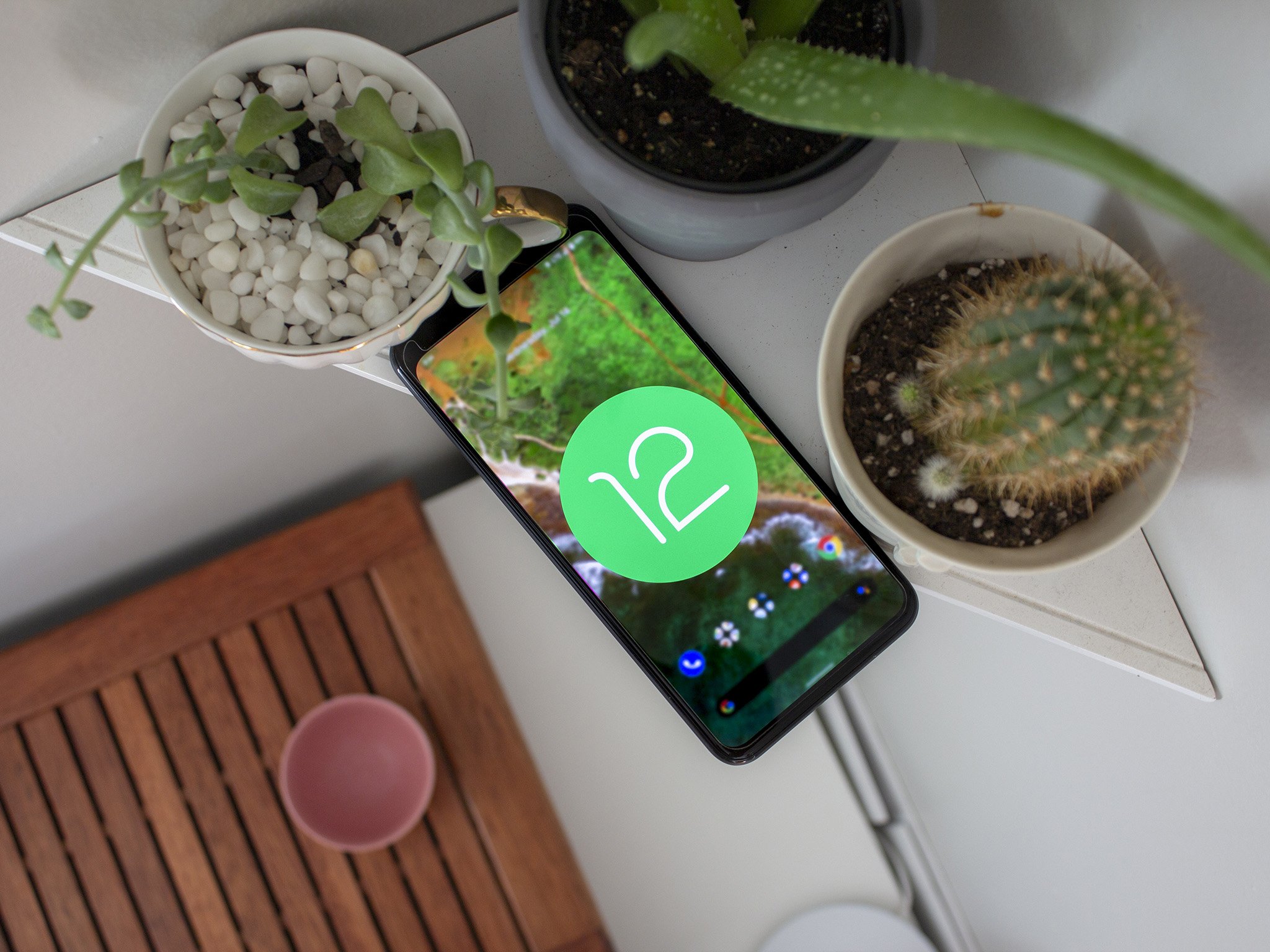

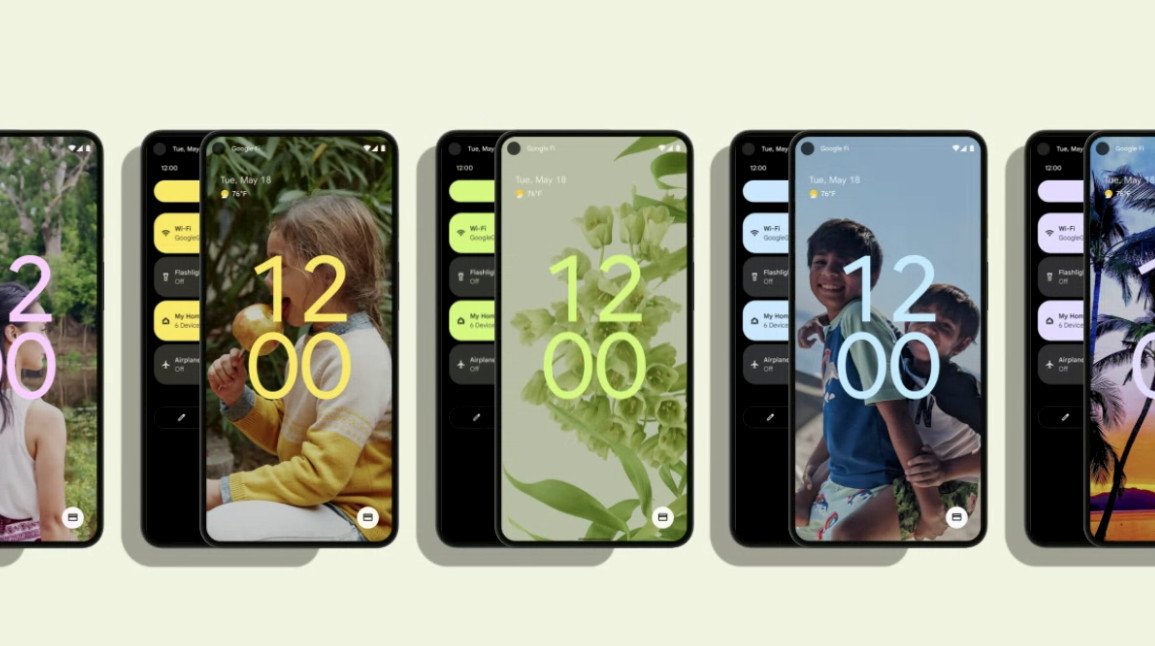


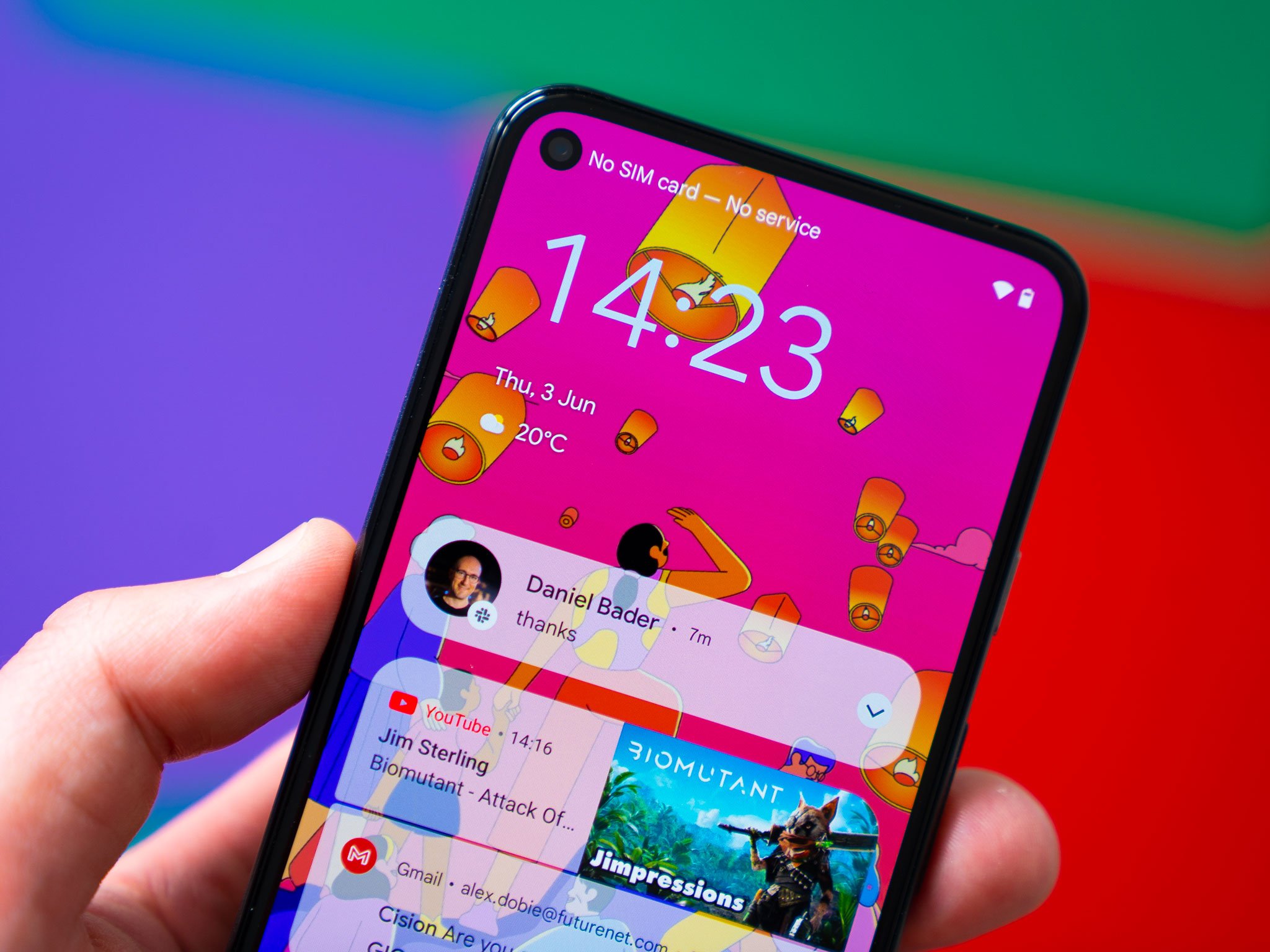
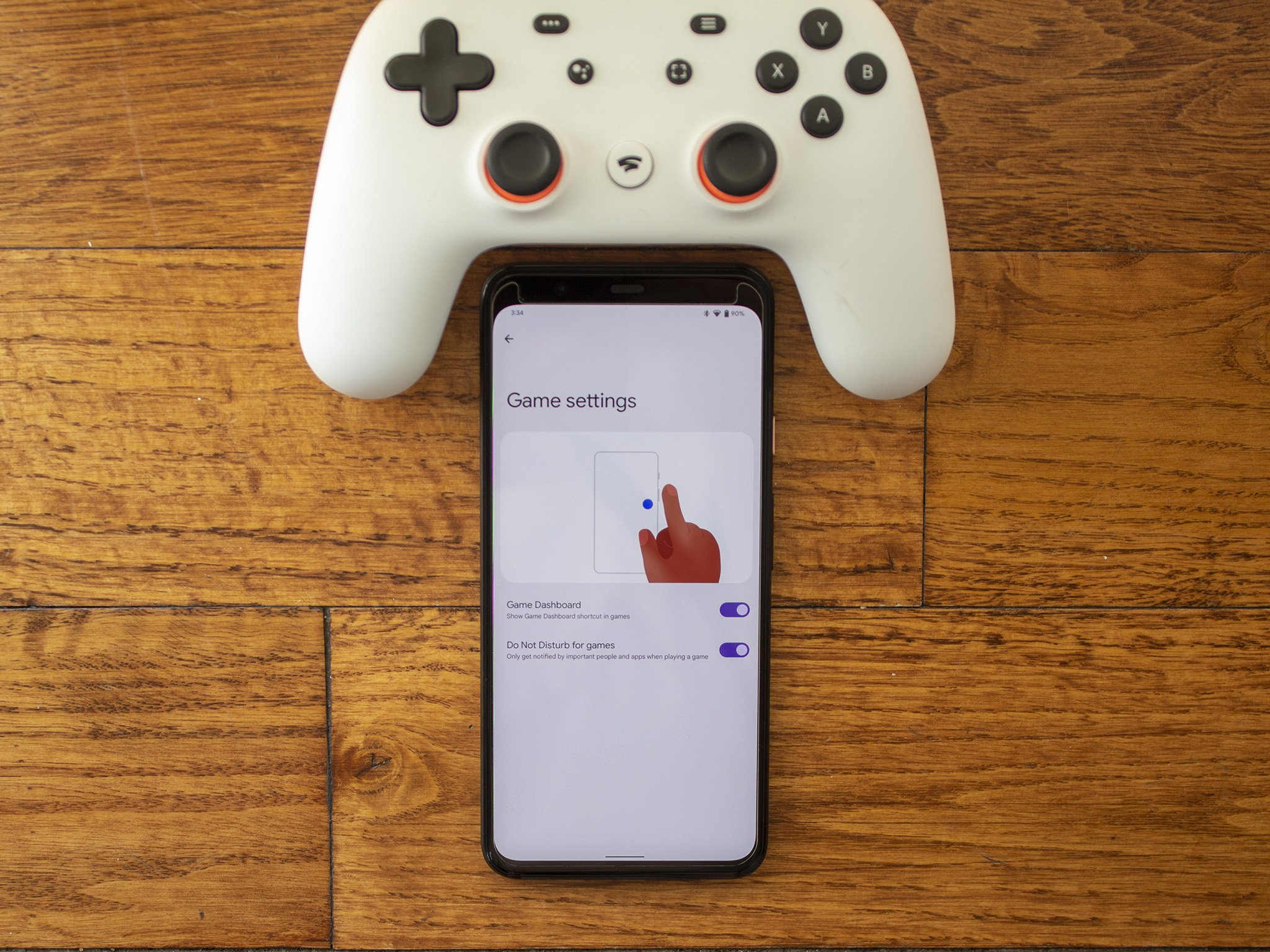
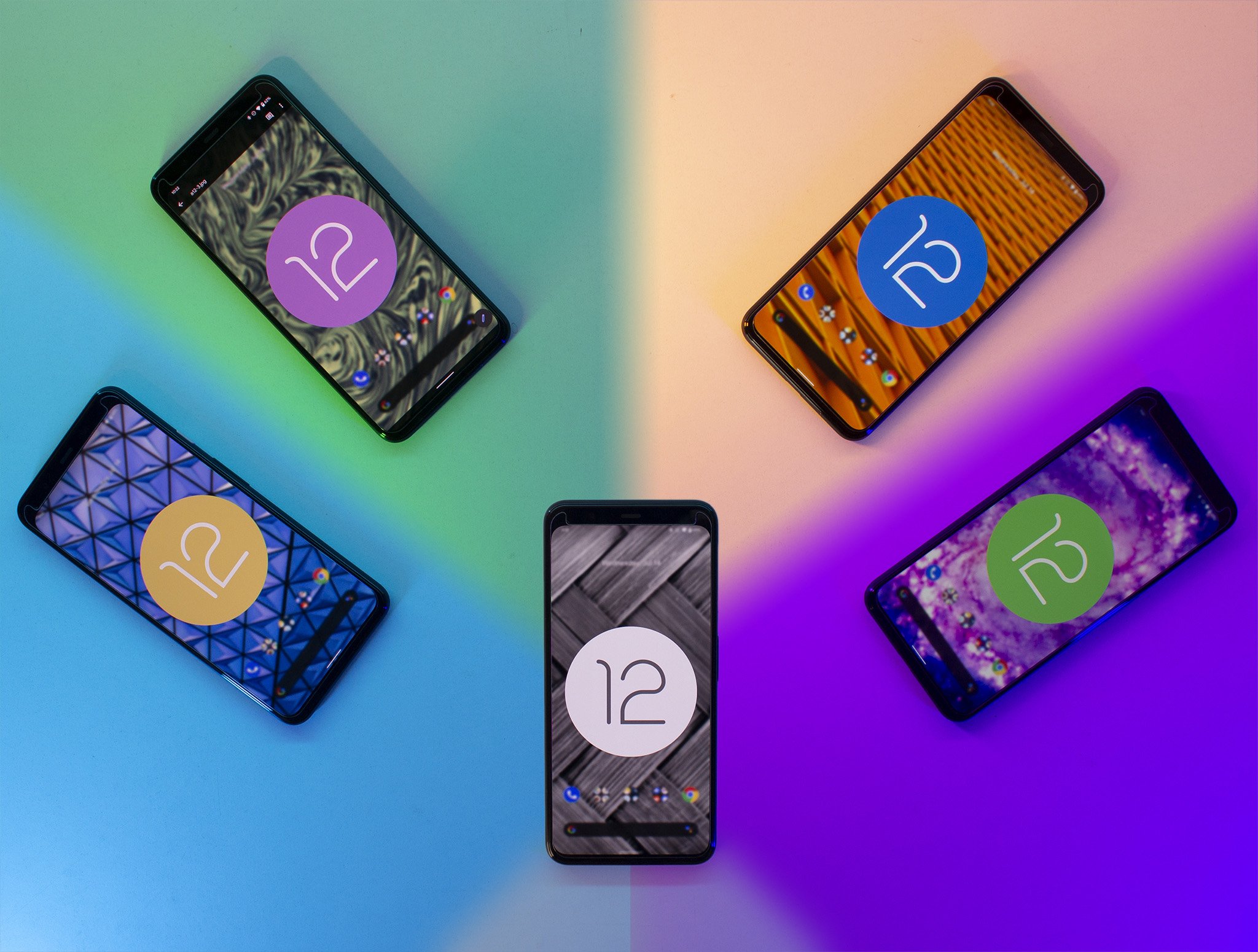

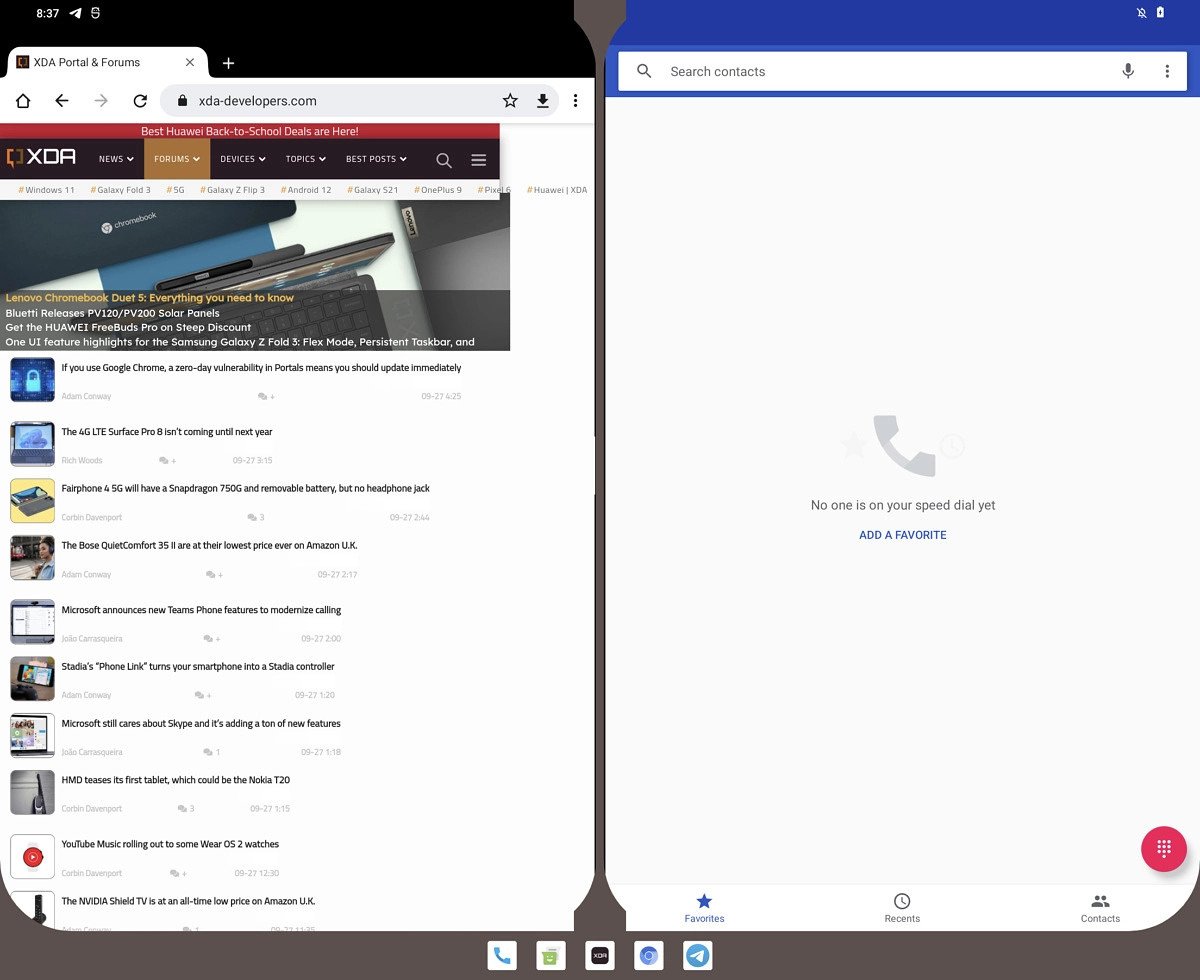
Tidak ada komentar:
Posting Komentar